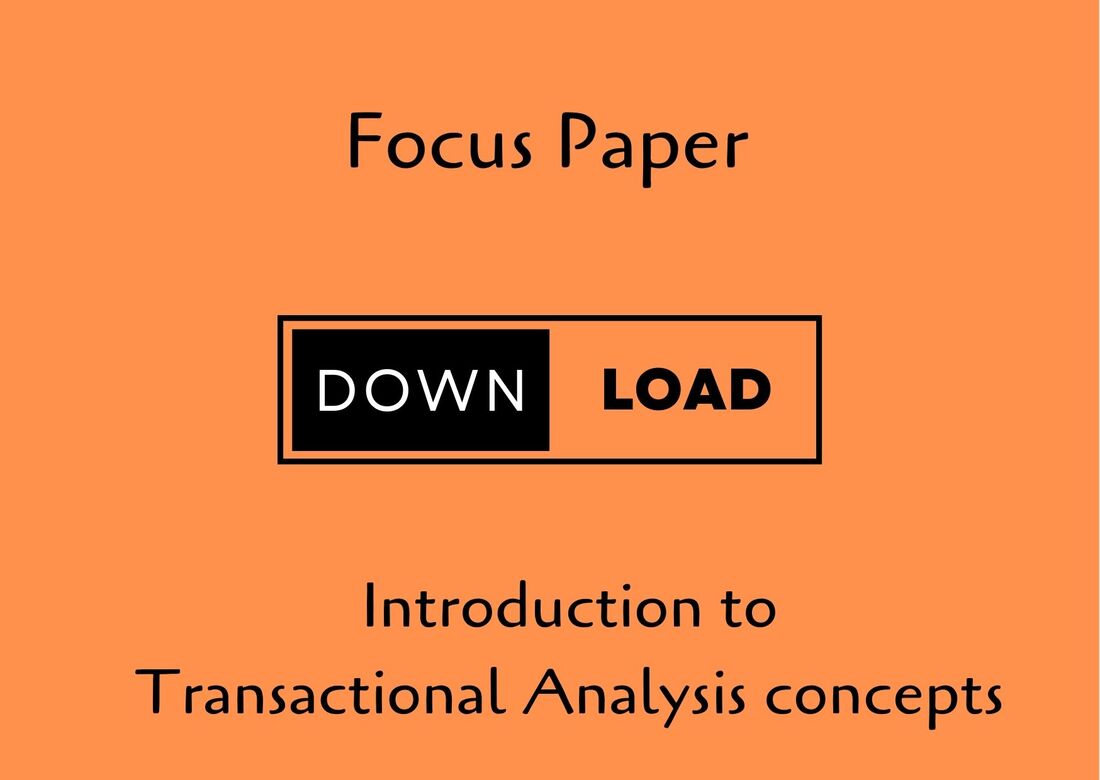|
".. For behind each racket, however phoney it may seem, there are real feelings or perceptions of another kind which the individual is not allowing himself to be aware of in the present because they were prohibited in the past" (FANITA ENGLISH, 1971) Rackets are tricky things. I don't mean those of the tennis variety - anyone who knows me will know that sport is not my thing. A good long walk with the dog by the sea is more like it for me - or when I get the chance, a really good fling on the dance floor clears my head and settles my soul.
What I mean by Rackets, is the Transactional Analysis term for how we sabotage ourselves in our head. We are not even conscious most of the time, that we are doing it. We behave in ways we decided long ago in our past were effective strategies for us to get by in the world. These behaviours become so ingrained, we take them as reality, rather than a belief we have constructed. Maybe in our family expressing anger was frowned upon (little girls especially typically get this message from parents). We are told to keep quiet and not show our feeling of frustration. We may come to learn that expressing anger is not acceptable, but being tearful is allowed, or being stoical, closing down, following that British code of 'stiff upper lip'. All that is fine. Anger is not. But repressed anger has to go somewhere - and it is often 'swallowed', repressed to level eventually where it affects our health. In these situations as a child we learn to be stoical in order to get attention and praise from the big people in our lives. Or we learn that if we start crying as a way to release our feelings of anger we are comforted, held and reassured. So now when we feel legitimately angry we substitute that sense of stoicism or we cry instead of being able to process our anger in ways that will bring about change. Because repressing anger equals not dealing with it, it is not resolving the issue. By not telling someone that what they have done has provoked an angry response the situation is likely to be repeated. We continue to be stoical or cry when we should be sorting out the issue. We disable ourselves in this way. The circular thinking element comes in when we as small children needing to fit in with the big people, develop beliefs about how we need to be in the world. The belief "I must not show anger, it is not safe for me" leads us to substitute another behaviour, which may be to cry when we feel angry. Crying may then be reinforced as 'good' - the big people like it and comfort me. So I learn that crying is good, showing anger is not - the belief "I must not show anger" is then re-inforced. So years later, when grown-up and out in the world, we have a problem with satisfactorily resolving a situation which has left us feeling angry - because we have not learnt how to channel our anger in ways that bring about a solution. We go round and around the circle, it is as if we have put ourselves behind bars, imprisoned in behaviours of our own making. We layer our emotions - we cover sadness with aggression, anger with tiredness. We can break out of the bars that bind ... becoming aware of the signs, the triggers, the sensations in our body the thought processes we go through. There are concepts in TA which combat the level of racket thinking and behaving, that free us, that ground us in the present - paying attention to the reality of today and not living in the past, in a dream or trance. But first, we need to understand the concept underlying the circular thinking - in order to break out - we need insight. English, F (1971) Rackets and Real Feelings: The Subsitution Factor Transactional Analysis Journal, 1971, 1(4), 225-230
0 Comments
Leave a Reply. |
Lynda Tongue TSTA-orgLearning and Development consultant since 1991. Teaching and Supervising Transactional Analyst since 2013. Archives
March 2024
|
- Welcome
- TA
-
Workshops
- 008 Power Dynamics
- 009 Human Beings Being Human
- 010 Psychological Games
- 011 Group Dynamics
- 012 Stages of Group Development
- 013 Analysing Organisations
- 014 Cultural Competence
- 015 Systemic Leadership
- 016 Leading Organisational Change
- 017 Unconscious Processes
- 018 Supervision and the Meta-level Perspective
- 019 Leadership - a Relational Issues
- 020 Imposter Syndrome
- 021 Contact Doors
- 022 The Permission Wheel
- 023 People Watching
- 024 Personality Adaptations
- TA Awards
- Supervision
- Blog
- Newsletters
- Contact
- Policies
- Downloads







